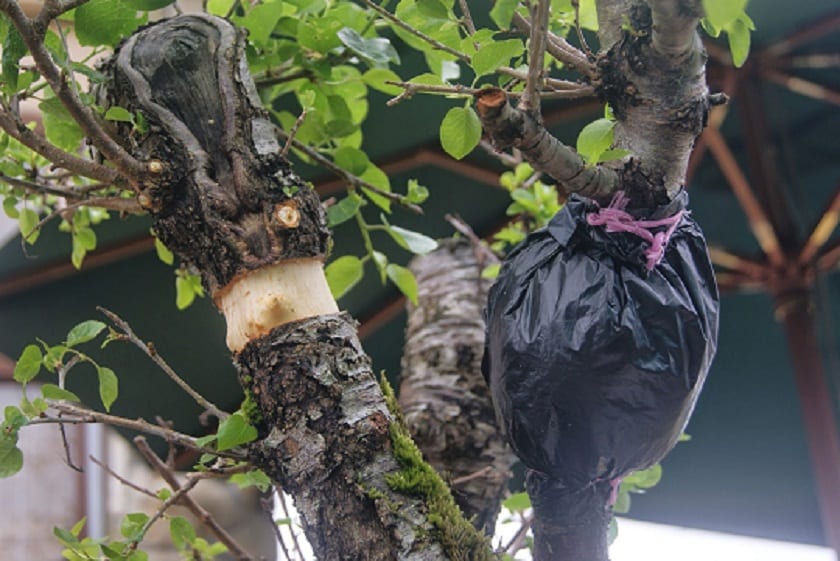
Propagation using the various forms of seed collection and germination, as well as the production of plants through cuttings, is known to professional gardeners, but very few know about propagation techniques by layering.
This technique involves separation of the new plants from the mother plant, only when they have developed their own root system, achieving a plant equal to the mother plant.
Different techniques for layering

La spread by layering It is recommended in plants with woody and flexible stems, here are some techniques:
Simple layer
Maybe is the most common of the techniques for layer propagation and it consists of bending the stem of the mother plant, until it makes contact with the earth.
Then a cut is made in the part that will be underground and a toothpick is placed in the cut. The buried stem is secured with a U-shaped wire, so this stem must remain with its foliage and with a measure no less than 30 centimeters, which is tied to a kind of pattern to help it develop.
Multiple or serpentine bend
When you want to get new plants, this technique is recommended for plants with flexible and long branches like those possessed by climbing plants.
The process is similar to simple layering techniqueWith the difference that a kind of interweaving of the stem with the earth is carried out, the parts of the stem that are above the ground must contain at least one bud and one leaf, so that the plants can sprout from them.
Aerial layering
This spread technique by layering It is one of the most preferred due to its versatility, because for its use it is possible to have inflexible plants, shrubs, vines, etc. The secret of this type of layering is that the plant is in full development, which is the time when the sap circulates through the stem.
This type of propagation by layering is carried out by wrapping a branch portion with a cylindrical bag containing the growth hormone powder, which closes around the branch at both ends.
Generally and plastic materials are used for this, which can be obtained, for example, from a non-transparent polyethylene or cellophane foil or from a common garbage bag. It is important that its color is preferably dark or black, so that it keeps the heat and humidity inside.
Periodically, the contents of the bag should be moistened using a syringe.The presence of a hot and humid substrate stimulates the emission of roots from the stem, and when the process is completed, the branch is cut under the sack and transplanted into a pot or into the ground. The air layering technique is especially indicated for the propagation of tropical and ornamental plants, and the best period for its practice is summer and towards the end of spring, when the environmental conditions (temperature and humidity) are optimized.
This technique has its complications, since it must be done in the right season. As its name indicates, the tip of the branch is buried and like other layering techniques the branch is held in place with a thin metal bent in a U. This causes the plant to grow downward, then upward, producing curved roots.

Mound layered
This technique is suitable for all plants, especially hard-stemmed shrubs and trees, such as blueberry, curly grape, and currant; it is also frequently used for production of rootstocks for fruit species such as apple trees.
This type of spread by layering It must be done in winter, when the mother plant is placed at ground level, allowing it to grow, to proceed to cut the new plants at ground level.
The maximum thickness should not exceed 30-40 cm, and the presence of humid conditions stimulates the emission of roots. After rooting, the top layer of soil is removed, separating the new stems and transplanting them in the most appropriate way according to the species.